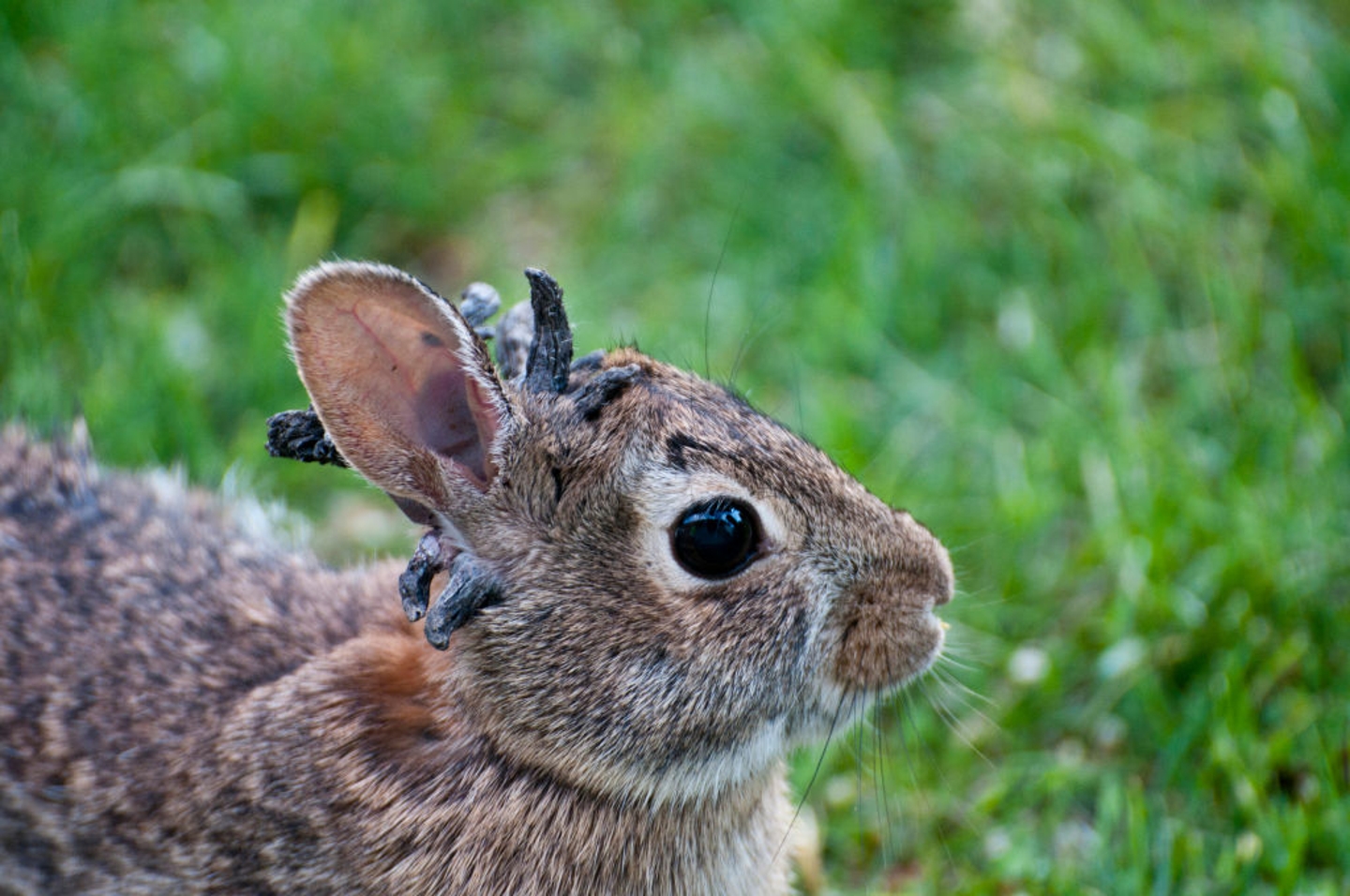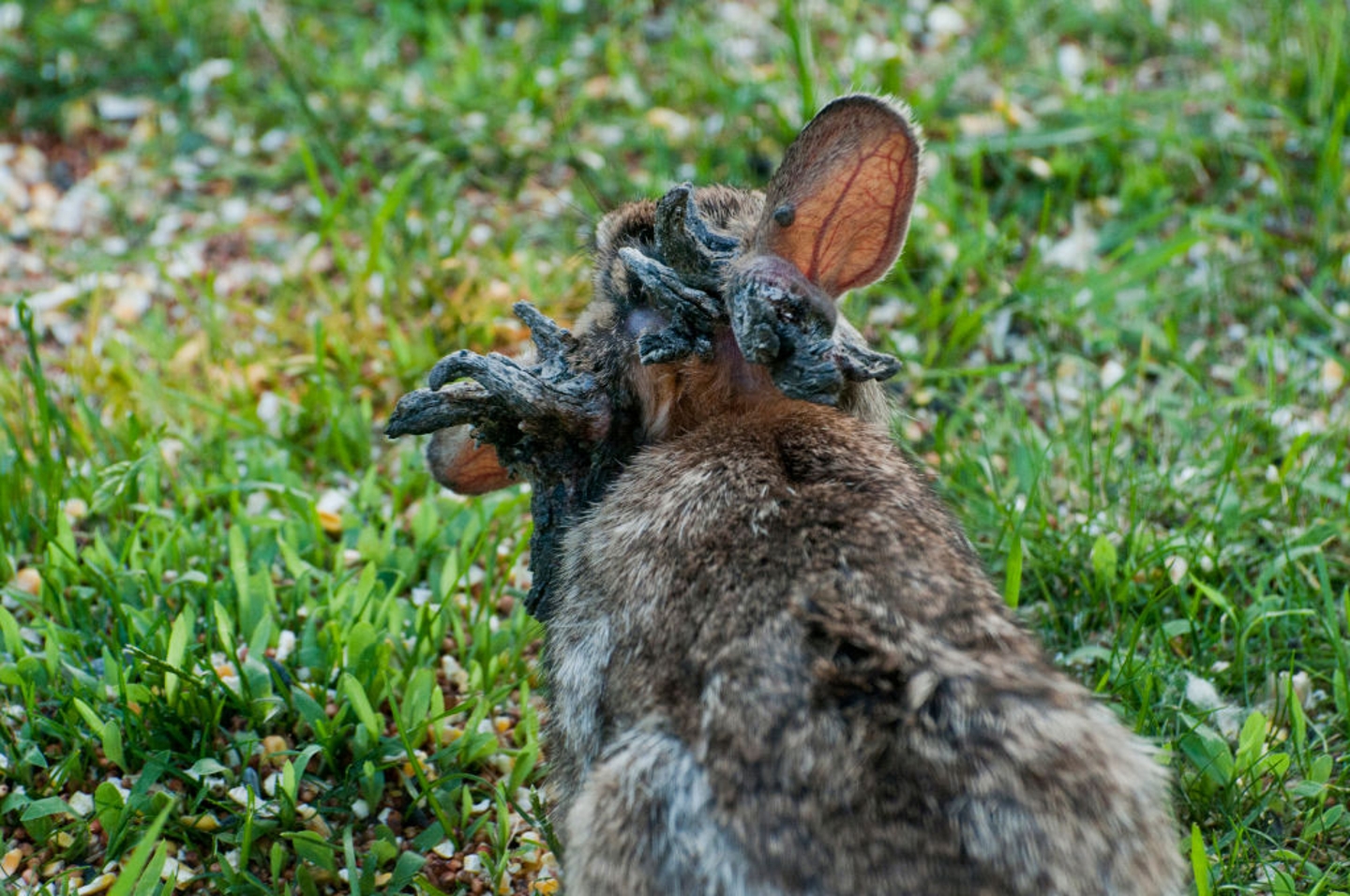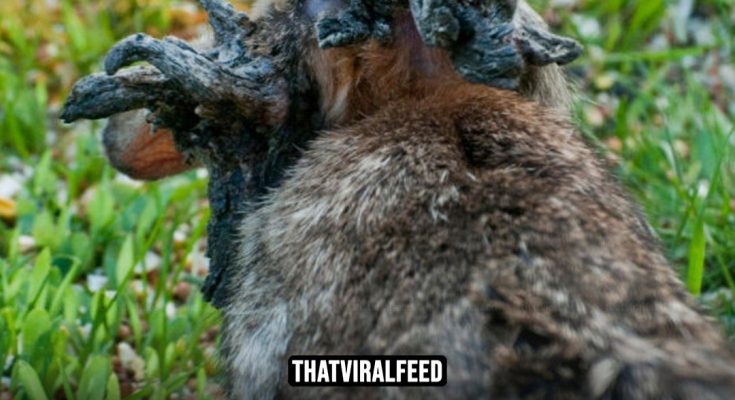While it might sound like the plot of a quirky Wallace & Gromit adventure, these so-called were-rabbits are very real. They have been spotted throughout Fort Collins, Colorado, which sits about an hour’s drive north of Denver.
The word ‘lurking’ makes them sound far more menacing than they really are. In reality, these are unfortunate animals suffering from a potentially deadly virus. If the condition worsens, the growths can eventually block their vision or mouths, making it impossible for them to see or eat. This can lead to a slow death from starvation if left untreated.
“It looked like black quills or black toothpicks sticking out all around its mouth.” explained local resident Susan Mansfield while speaking to WLBT.
“I thought he’d die off during the winter, but he didn’t. He came back a second year – and it grew.”
What is cottontail rabbit papilloma virus (CRPV)?
This strange and distressing illness is known as cottontail rabbit papilloma virus (CRPV). It was first identified in 1933 by Richard E. Shope, who discovered it in cottontail rabbits living in the Midwestern United States.
Also referred to as Shope papilloma virus — in honor of its discoverer — CRPV is an oncogenic DNA virus. That means it can cause the growth of tumors in infected animals.
The tumors typically form on the skin of rabbits, but the virus can also lead to the development of squamous cell carcinomas, a dangerous type of cancer.

How does CRPV spread?
Experts have learned that the virus is often spread initially through biting insects like mosquitoes and ticks, which can carry the disease from one rabbit to another.
It can also pass directly between rabbits, especially through open wounds or skin lesions where the virus can enter easily.
In addition, indirect transmission is possible. The virus can be spread through shared bedding, food, and water containers. Research even suggests that papillomaviruses could be spread via blood transfusions — though the idea of rabbits giving blood is more of a cartoon scenario, unless we’re talking about Bugs Bunny.

What have experts said about CRPV?
The good news is that CRPV is classified as a non-zoonotic disease, meaning it cannot be directly transmitted from animals to humans. However, that doesn’t mean people should interact with infected rabbits.
The concern is that non-zoonotic diseases can sometimes mutate into forms that could affect humans — just as we saw with SARS-CoV-2, the virus responsible for Covid-19.
Colorado Parks and Wildlife (CPW) has issued clear guidance on the matter, urging the public to exercise extreme caution.
Veterinarians recommend that domestic rabbit owners protect their pets from exposure to pests. If a pet rabbit does get bitten and develops growths, surgical removal of the tumors by a vet can prevent the cancer from becoming malignant.



